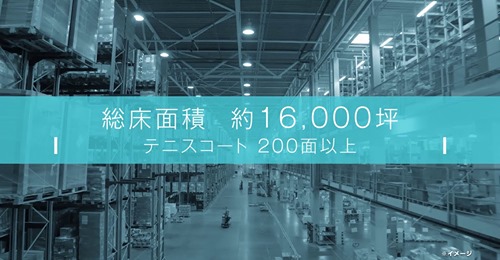
1. Introduction and Context
Industry 4.0 represents the fusion of digital and physical systems in manufacturing, enabling machines, sensors, and software to communicate in real time. It builds on previous revolutions—steam power, electrification, and basic automation—by adding connectivity, data analytics, and intelligent control. The goal is to create smart factories where processes self-optimize, adapt to changing demands, and operate with minimal human intervention. This transformation drives agility, efficiency, and innovation across every stage of production.
2. Core Technologies Powering Industry 4.0
2.1 Cyber-Physical Systems (CPS)
-
Integrate sensors and actuators with embedded computing for closed-loop control.
-
Use real-time protocols like OPC UA and MQTT for reliable data exchange.
-
Enable machines to make autonomous decisions based on local and global information.
2.2 Internet of Things (IoT)
-
Connect diverse devices—PLCs, robots, conveyors—into a unified network.
-
Collect high-frequency telemetry, status, and environmental data.
-
Organize data flows via layered architecture: sensing, transport, processing, and applications.
2.3 Big Data and Advanced Analytics
-
Aggregate terabytes of historical and streaming data from shop floors.
-
Apply batch and real-time analytics to detect patterns, anomalies, and optimization opportunities.
-
Support digital twins, root-cause analysis, and KPI dashboards.
2.4 Cloud and Edge Computing
-
Leverage cloud platforms for scalable storage, cross-site analytics, and centralized AI services.
-
Deploy edge nodes near equipment to preprocess data, reduce latency, and enforce local controls.
-
Balance workload between cloud and edge based on bandwidth, security, and response-time requirements.
2.5 Artificial Intelligence and Machine Learning
-
Train predictive models for failure forecasting, quality inspection, and process optimization.
-
Use computer vision and deep learning to detect surface defects and assembly errors.
-
Continuously refine algorithms with new data for adaptive performance improvements.
2.6 Digital Twin
-
Create virtual replicas of machines, lines, or entire plants, synchronized in real time.
-
Run “what-if” scenarios to validate process changes before physical rollout.
-
Optimize layouts, workflows, and maintenance schedules based on simulated outcomes.
2.7 Collaborative Robots (Cobots)
-
Work safely alongside human operators without extensive safety caging.
-
Adapt trajectories and forces dynamically to handle variable tasks.
-
Free up skilled workers for higher-value assignments by automating repetitive chores.
2.8 Additive Manufacturing (3D Printing)
-
Build complex geometries layer by layer, reducing part count and assembly time.
-
Facilitate on-demand spare-part production, slashing inventory costs.
-
Experiment with advanced materials—metals, ceramics, and composites—for lightweight, high-strength components.
Below is a simplified representation of a typical Industry 4.0 stack:
┌───────────────┐
Sensors│ │ Applications
Actuators├─ IoT Gateway ─┤ MES / ERP / Analytics
│ │
└───────────────┘
│
┌───────────────┐
│ Edge Node │ (Local AI, Control)
└───────────────┘
│
┌───────────────┐
│ Cloud │ (Big Data, Deep Learning)
└───────────────┘
Manufacturers often adopt the RAMI 4.0 framework to align layers—from asset management to business process—and to standardize interfaces.
4. Positive Impacts on Manufacturing
| Aspect | Traditional Approach | Industry 4.0 Transformation |
|---|---|---|
| Equipment Utilization | Manual monitoring, reactive fixes | Predictive maintenance, higher uptime |
| Quality Control | Sample-based inspections | 100% automated inspection with AI |
| Production Flexibility | Long changeover times | Rapid reconfiguration via digital twin |
| Supply-Chain Optimization | Periodic forecasting | Real-time demand-driven adjustments |
4.1 Efficiency and Cost Reduction
Real-time monitoring and AI-driven optimization continually tune machine parameters, reducing energy use and cycle times. Manufacturers achieve up to 20–30% throughput gains by minimizing unplanned downtime and bottlenecks.
4.2 Predictive Maintenance
Vibration, temperature, and current signatures feed ML models that forecast failure weeks in advance. Scheduled repairs replace emergency shutdowns, cutting maintenance costs by 10–15%.
4.3 Automated Quality Assurance
High-resolution cameras and neural networks inspect every unit at line speed, detecting micro-defects invisible to the human eye. This reduces scrap rates, improves first-pass yield, and shortens time to market.
4.4 Mass Customization
Digital twins combined with additive manufacturing allow production of small, personalized batches without excessive setup time. Companies can deliver tailored products at near-mass-production costs.
-
Automotive Manufacturer By embedding IoT sensors on painting robots and analyzing spray patterns with AI, one OEM cut paint rejects by 75% and saved over $2 million in materials annually.
-
Electronics Producer Implementing a digital twin of its PCB assembly line slashed prototype validation time from six weeks to two, accelerating product launches and boosting revenue.
-
Security Risks Segment networks, apply end-to-end encryption, and adopt zero-trust principles to safeguard IP and operations.
-
Legacy System Integration Use protocol adapters (Modbus to OPC UA) and IoT gateways to bridge old PLCs with modern platforms.
-
Data Management Employ data lake architectures and scalable PaaS offerings (e.g., Azure IoT, AWS IoT Greengrass) to handle volume, variety, and velocity.
-
Workforce Readiness Invest in cross-training programs, Industry 4.0 certifications, and hands-on bootcamps to upskill engineers and operators.
-
5G/6G Connectivity for ultra-low latency and massive IoT deployments.
-
AIoT: deeper integration of AI at the device edge for real-time autonomous decisions.
-
AR/VR for immersive training, remote maintenance, and collaborative design.
-
Industry 5.0 ushering in sustainable, human-centric manufacturing focusing on creativity and social impact.



